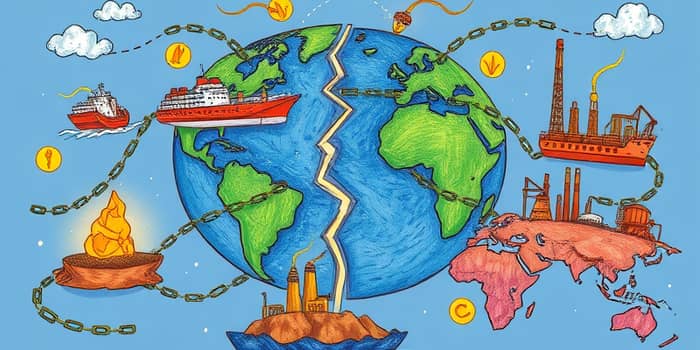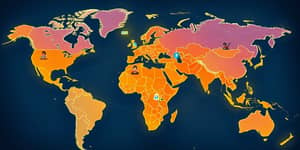
From industrial minerals to strategic metal ores, export bans and restrictions are reshaping the global trade landscape. Nations are increasingly leveraging these measures to achieve policy goals, yet the ripple effects on markets and industries worldwide are profound.
In recent years, countries abundant in natural resources have adopted more aggressive trade policies to secure domestic advantage. These measures are no longer rare occurrences but a defining feature of the modern trading system.
Between 2009 and 2023, export restrictions on industrial raw materials increased more than fivefold. In 2023 alone, over 500 new raw mineral products faced restrictions, reflecting a sharp acceleration in export controls as governments seek to maximize value and advance strategic interests.
Export bans serve a variety of national objectives. While resource conservation and environmental protection often feature in official explanations, recent cases reveal deeper geopolitical and economic motivations.
The trend is global. Countries that command substantial market share in critical minerals wield considerable influence over prices and supply security, incentivizing policy makers to preserve or expand that power through restrictive measures.
Examining recent high-profile cases highlights how export bans operate and the scale of their impact.
Each of these measures was designed to achieve national goals, but the cumulative effect has been significant disruption to global commodity chains, leading to volatility and uncertainty in key supply markets.
Critical minerals have become the focal point of export restrictions. Rare earth elements, nickel, cobalt, graphite, and other industrial inputs are essential to modern technologies from smartphones to electric vehicles.
China controls 60% of global rare earth production and 90% of processing capacity. Its export restrictions have sent shockwaves through industries worldwide, prompting concerns over green energy rollouts and digital transitions.
Similarly, Indonesia’s nickel ban, aimed at building a domestic battery industry, forced global players to reroute supply chains, often at higher logistical and regulatory costs. And while the Democratic Republic of Congo’s cobalt restrictions nudged prices upward, abundant stockpiles in Chinese warehouses moderated short-term shortages.
When a major exporter imposes a ban, the immediate effect is a supply constriction and price surge. Buyers scramble to secure alternative sources, sometimes turning to higher-cost or lower-quality suppliers.
However, these adaptations carry long-term consequences. Shifting investments toward new production sites can take years to materialize, and reliance on alternative suppliers may lead to inferior grades or environmental trade-offs.
Moreover, retaliatory or copycat bans can trigger a domino effect, compounding uncertainty and threatening the resilience of global supply networks.
Under the World Trade Organization’s rules, export restrictions are not outright prohibited, but they are constrained by Article XI of GATT, which seeks to promote transparency and limit arbitrary measures.
Ambiguity over what constitutes a restriction or ban has led to numerous disputes and challenges, yet enforcement remains difficult. Some nations exploit exceptions for environmental protection or national security to justify broad curbs.
In parallel, geopolitical tensions—especially between major powers—are fueling a new era of trade weaponization. Commodity exports have become strategic assets in broader security and diplomatic contests, increasing the stakes far beyond simple market considerations.
Businesses and governments are deploying a variety of strategies to manage these risks.
While these measures can mitigate immediate disruptions, they often involve significant costs and long lead times before new supply lines or technologies become fully operational.
The proliferation of export bans poses a serious challenge to global cooperation. Without transparent rules and predictable policies, investors and manufacturers face elevated risks that can slow the pace of innovation and sustainable development.
Experts and multilateral organizations advocate for:
Ultimately, balancing national interests with the needs of a complex global economy requires cooperation, trust, and adherence to clear rules. Without collective action, export bans risk triggering deeper fragmentation and jeopardizing critical infrastructure and technologies that underpin the modern world.
References













